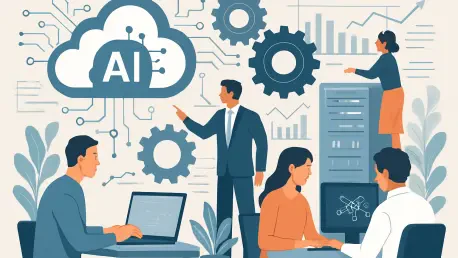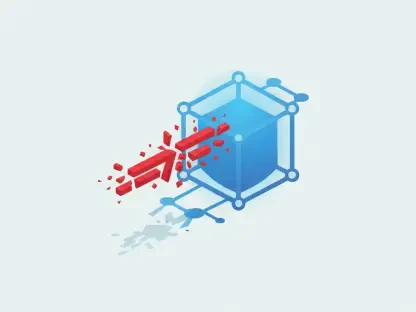I’m thrilled to sit down with Chloe Maraina, a renowned Business Intelligence expert whose passion for big data and innovative data management strategies has shaped the way enterprises visualize and leverage information. With her deep expertise in data science and a forward-thinking vision for integrating data into compelling visual stories, Chloe offers invaluable insights into the rapidly evolving landscape of IT modernization and AI adoption. In this interview, we dive into the transformative power of AI in large organizations, the critical role of IT modernization as a competitive edge, the specific strategies driving success, and the importance of platform engineering in accelerating AI deployment.
How do you see AI adoption shaping the enterprise landscape today, and what trends stand out to you?
AI adoption is truly reshaping the enterprise world at an unprecedented pace. Right now, a significant majority of large organizations—around 71%—are deploying AI at scale, which is a huge leap from just a few years ago when many were still in experimental phases. What stands out to me is how AI is no longer just a buzzword; it’s becoming a core driver of business outcomes. We’re seeing it directly contribute to revenue growth in over half of these companies, alongside boosts in productivity and customer engagement. The trend is clear: those who invest strategically in AI are pulling ahead, while others risk falling behind.
Can you elaborate on how AI is driving revenue growth for so many organizations?
Absolutely. In about 56% of the organizations surveyed recently, AI initiatives are directly tied to revenue increases. This often comes from leveraging AI to personalize customer experiences, optimize pricing strategies, or even predict market trends with uncanny accuracy. For instance, AI-powered recommendation engines in retail can drive higher sales by suggesting products tailored to individual preferences. It’s not just about cutting costs; it’s about creating new revenue streams and capturing opportunities that were previously out of reach.
What role does IT modernization play in separating the leaders from the laggards in AI adoption?
IT modernization is the linchpin for successful AI adoption. Organizations that have heavily invested in modernizing their IT infrastructure—think comprehensive upgrades across multiple areas—achieve far better results. These “heavy investors” see IT efficiency rates close to 90%, compared to just over 60% for others. They adopt AI faster, innovate more, and get products to market at a staggering 87% success rate versus a mere 32% for less modernized peers. Modernization isn’t just about tech; it’s about building a foundation that lets AI thrive and deliver real business value.
What specific modernization efforts have you seen leading enterprises prioritize in recent years?
Over the past five years, top enterprises have focused on several key areas. A big one is enhancing developer experience through automation, with over 70% investing in tools to boost productivity. They’ve also pushed for platform standardization to manage the complexity of hybrid and multicloud setups, with two-thirds of organizations working on visibility across environments. Others are diving into infrastructure abstraction to simplify things for dev teams or refactoring apps into microservices for greater flexibility. These efforts create an ecosystem where AI can be integrated seamlessly.
How are platform engineering teams and dedicated AI platforms influencing the speed of AI implementation?
Platform engineering teams are game-changers. More than half of surveyed IT leaders consider these teams vital for accelerating AI implementation. They streamline processes and ensure consistency across deployments. Similarly, dedicated AI platforms are seen as essential by nearly half of respondents, with many either building or buying platforms tailored for AI delivery. These platforms tackle major hurdles like complexity, security, and cost by offering standardized deployment patterns and built-in controls, making it easier to scale AI without constant firefighting.
Why do you think there’s such a strong move toward private-cloud PaaS environments for custom applications?
The shift to private-cloud Platform-as-a-Service environments is driven by a need for balance—organizations want the agility and automation of cloud-native setups but with the control and security of private environments. Right now, over 40% of custom apps run on self-managed on-premises platforms, but over three-quarters of organizations plan to migrate these within the next couple of years, with a large chunk heading to private-cloud PaaS. Security is a top driver for nearly 60% of these moves, alongside cost savings and the need for scalability. It’s about getting the best of both worlds.
What’s your forecast for the future of AI adoption and IT modernization in enterprises over the next decade?
I believe we’re just at the tip of the iceberg with AI adoption and IT modernization. Over the next decade, I expect AI to become even more embedded in every facet of business operations, from strategic decision-making to day-to-day tasks. Modernization will no longer be optional—it’ll be a survival imperative. We’ll see a deeper focus on AI-native infrastructures and platforms, with private-cloud solutions dominating for sensitive workloads. The gap between heavy investors and others will likely widen unless more organizations commit to comprehensive transformation. My forecast is that those who treat AI and modernization as intertwined, strategic priorities will redefine industry standards and lead the pack.









